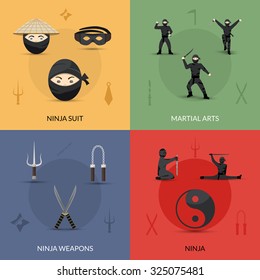The History And Ideology Of Martial Arts: A Deep Dive
The History And Ideology Of Martial Arts: A Deep Dive
Blog Article
Published By-Ingram Wall
Step into the ancient world where martial arts were born out of necessity in varied regions. Cultures crafted unique fighting styles intertwined with historical contexts. Methods progressed over centuries with dedicated technique and cultural exchanges. Today, modern-day martial arts mix standard elements for maximum performance. Philosophically, martial arts highlight self-control, self-improvement, and harmony. Regard, humility, and balance are foundational concepts assisting professionals in the direction of growth and strength. Discover the midsts of this abundant history and philosophy to uncover the profound impacts forming this long-lasting self-control.
Beginnings of Fighting Style
Fighting style came from various areas worldwide, evolving as sensible combat systems to resist risks. These ancient battling designs were established out of requirement, with each culture crafting strategies matched to their distinct settings and difficulties. From the grappling arts of Jujutsu in Japan to the striking strategies of Kung Fu in China, martial arts were deeply linked with the historical, social, and social fabric of their corresponding cultures.
In Japan, the samurai class refined martial arts like Kenjutsu, the art of the sword, which later progressed into the more popularized kind of Kendo. Meanwhile, in mma classes near me , Capoeira emerged as a mix of dancing and battle, produced by enslaved Africans as a means to resist injustice. https://www.wtol.com/article/news/local/group-offers-free-self-defense-training-for-women/512-a91720e1-3956-4665-b85e-82ebacf2b698 fighting style carries with it a rich background and approach, showing the worths and ideas of individuals that exercised them.
As you explore the origins of martial arts, you reveal a tapestry of human ingenuity, durability, and the unyielding spirit of warriors throughout time.
Advancement of Strategies
Via centuries of technique and refinement, battle strategies within numerous martial arts have gone through an extensive development. From old designs like Kung Fu and Karate to a lot more modern techniques such as Brazilian Jiu-Jitsu and Krav Maga, the advancement of methods has been driven by a combination of social influences, useful applications, and technical innovations.
One significant aspect of this development is the cross-pollination of methods in between various martial arts. For instance, techniques from standard Japanese Jiu-Jitsu were included into the development of Judo by Jigoro Kano in the late 19th century. This mixing of styles has brought about the advancement of hybrid martial arts like Mixed Martial Arts (MIXED MARTIAL ARTS), which incorporate aspects of striking, grappling, and entry techniques.
Additionally, the advancement of methods has been formed by the raising emphasis on effectiveness and performance in fight. Specialists have actually continuously sought to fine-tune their methods through rigorous training, trial and error, and competition, leading to the development of highly specialized and reliable battling styles. In general, the evolution of strategies in martial arts reflects the dynamic nature of battle and the ongoing pursuit for renovation and development.
Thoughtful Structures
Discovering the underlying philosophical concepts of martial arts gives insight into their core worths and guiding beliefs. At the heart of numerous martial arts self-controls is the concept of self-control itself. By educating your mind and body to serve as one cohesive unit, you grow self-control that prolongs beyond the dojo or gym right into daily life. This self-control incorporates respect, humbleness, and self-constraint, forming not just your physical capabilities but also your character.
Another fundamental thoughtful structure in martial arts is the idea of continuous self-improvement. The trip of understanding a fighting style is perpetual, with practitioners continuously making every effort to much better themselves, both physically and psychologically. This concentrate on development promotes durability, willpower, and a development state of mind that can be put on all elements of life.
Additionally, martial arts emphasize the significance of harmony and balance. Techniques are designed to make use of an opponent's power versus them, highlighting the principle of producing and rerouting force instead of satisfying it head-on. This viewpoint encompasses interpersonal partnerships, promoting peaceful resolutions and good understanding. By embracing these thoughtful foundations, martial musicians not only improve their combat skills but likewise cultivate a way of life centered on individual growth, respect, and consistency.
Verdict
To conclude, the history and ideology of martial arts offer an abundant tapestry of custom, discipline, and self-improvement.
Consider example the story of Bruce Lee, who changed martial arts by blending different designs and viewpoints to produce his own unique type of Jeet Kune Do.
Through what is a good martial art for self defense and advancement, martial musicians continue to push borders and motivate others to reach their full potential both in battle and in life.
